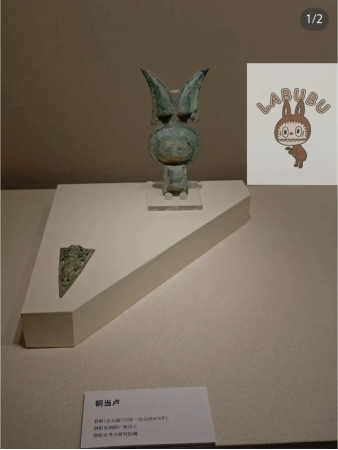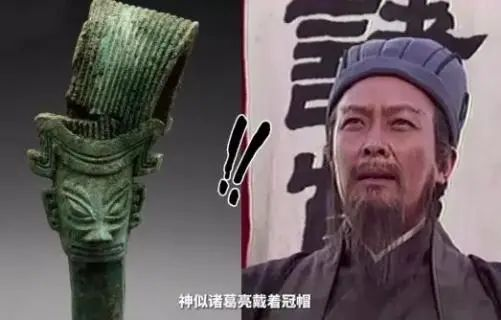Recently, the Luoyang Museum of the Spring and Autumn copper when Lu because of the appearance and the current popular fashion game "LABUBU" similar to the screen of social media.Previously, Nanchong City Museum in Sichuan Province, the Han Dynasty terracotta figurines also because of the face of "Ultraman" accidentally became popular.
The netizens play terrier constantly at the comment area, from "the original Han Dynasty people also believe that the light" to "this is the Eastern Zhou, you that is last week's", a span of a thousand years of "emoticon dialogue" so in the museum lively staged.A "emoji dialogue" spanning over a thousand years is thus lively staged in the museum.

Of course, this is not the first time because of the "cultural relics face pop culture" triggered by the craze.From the Sanxingdui bronze mask and "Zhu Geliang" face, to the Shanxi Museum of "cute owl" was made into emoticons, these accidental "hit the face of the cultural relics", aroused by the public of the museum's sense of intimacy.Museum's sense of intimacy.This also reminds us that the fun of museum artifacts and communication power, never more than "authoritative explanation" or "heavy history", it is more likely to be hidden in that between a smile.
Netizens find it interesting, not really think that "Ultraman crosses over", but because in the visual image information is very rich, emoticon culture is highly developed, the public's cultural consumption habits have quietly changed.In the fragmented communication, the reason why a cultural relic can attract attention, often because it and some kind of popular cultural symbols have an unexpected collision.
This kind of "collision" provokes a kind of humour and affinity that transcends time and space.When the cultural relics are no longer a cold exhibit, but become familiar to the public, people's perception of it is no longer unfamiliar and awe, but "participation" or even "play terrier" re-creation.
This is a unique ability of young people to recreate culture: to create a link between history and popularity, and to find resonance between authority and fun.

From the perspective of these two cases, the paths of the network buzz they triggered are amazingly consistent: a netizen stumbled upon the photo - social media platforms published - netizens watched and teased - official museums responded to the second dissemination of the warmth.This path shows that the first driving force of modern heritage dissemination is more and more inclined to the "netizen discovery", and no longer the official museum-led publicity.
More importantly, cultural relics "face collision terrier" lowers the threshold of public understanding of cultural relics, the original highly professional cultural relics can be chatting, can be shared.A 2000-year-old copper danglu, if only introduced as "one of the very important ancient horse ornaments", visitors may just nod blankly, but once it is said to be "cultural relics version of LABUBU", immediately has the space for discussion.
This is exactly the broken circle communication strategy that museums have repeatedly explored in recent years - breaking down the thick historical barriers in a relaxed way.
Faced with the enthusiasm of netizens, Luoyang Culture and Tourism was the first to post, "In addition to LABUBU, Luoyang has these 'conspicuous packages'!"Nanchong City Museum also graciously admitted that the terracotta figurines "are indeed quite similar", and did not reject people with a serious academic posture.This kind of openness, humour, inclusive attitude, but also museums to promote their own premise.
It can be seen that today's museums are not just a place for displaying cultural relics, but also a public space for carrying public emotions.When the younger generation is accustomed to consuming information through "playing with stems" and "contrasts", the museum's response has also shifted from "knowledge" to "resonance".
Further thinking is that in the future, can museums take the initiative to explore such "face collision artifacts" and turn the "conspicuous packet" type of artifacts into IP-based content?Is it possible to make a clear historical background behind each "Cute"?Fun and education go hand in hand, so that young people can quickly establish a vivid connection with history.
People see "Ultraman" and "LABUBU" in cultural relics, in fact, is in the current familiar cultural language, dialogue with the past, when the "museum hit the face of the terrier" frequently burst into flames, it is not that history has become "frivolous", it is that history has become "frivolous".When the "museum face hit terrier" frequently burst into flames, not history has become "frivolous", but in the developed mobile Internet, the public has found a new way of the same frequency with the cultural relics.
Declaration: This article comes from Guangming Daily. If copyright issues are involved, please contact us to delete.